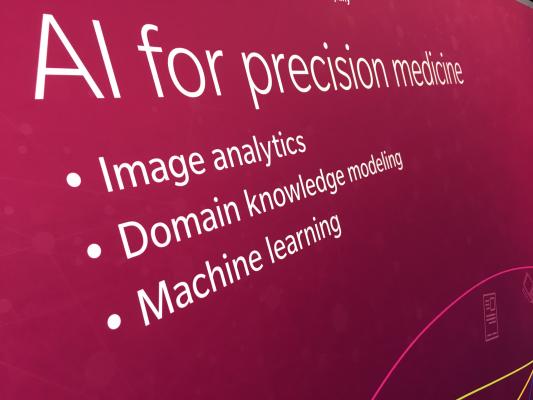
April 8, 2019 — NVIDIA and the American College of Radiology (ACR) announced a collaboration to enable thousands of radiologists nationwide to create and use artificial intelligence (AI) for diagnostic radiology in their own facilities, using their own data, to meet their own clinical needs.
Following a successful three-month pilot program by both parties, ACR is integrating the NVIDIA Clara AI toolkit into the newly announced ACR Data Science Institute ACR AI-LAB. ACR AI-LAB is a free software platform that will be made available to more than 38,000 ACR members and other radiology professionals to build, share, locally adapt and validate AI algorithms, while also ensuring patient data stays protected at the local institution.
The NVIDIA Clara AI toolkit is a key part of the NVIDIA Clara developer platform, which is designed to enable software-defined medical instruments and intelligent workflows. A platform to create data and algorithm pipelines, NVIDIA Clara consists of libraries for data and image processing, AI model processing and visualization. For AI, the toolkit includes libraries for data annotation, model training, model adaptation, model federation and large-scale deployment.
Making the vision of the ACR AI-LAB a reality requires the collaboration of the entire ecosystem, including industry leaders GE Healthcare, Nuance and NVIDIA, along with a vast network of healthcare startups and leading research institutes. NVIDIA Clara powers GE Healthcare’s Edison AI platform and the Nuance AI Marketplace, both of which are supporting the AI-LAB and are key solutions for the deployment of AI within the radiology workflow.
“This collaboration marks a significant milestone in an extraordinary ACR Data Science Institute project, helping enable the launch of the ACR AI-LAB, giving radiologists in any practice environment an opportunity to become involved in AI development at their own institutions, using their own patient data to meet their own clinical needs,” said Bibb Allen Jr., M.D., FACR, and chief medical officer of the Data Science Institute at the American College of Radiology.
An initial pilot with the Ohio State University (OSU) and the Massachusetts General Hospital and Brigham and Women’s Hospital’s Center for Clinical Data Science (CCDS) helped NVIDIA and ACR define the assets and pathways necessary to enable facilities to work together and with industry to refine AI algorithms without sharing potentially sensitive patient data. Bringing an AI model to the patient data, instead of patient data to the model, can help increase diversity in algorithm training, facilitate validation of the algorithms and enable radiologists to learn the steps needed to adapt algorithms to their institutions’ clinical needs.
Using the NVIDIA Clara AI toolkit, OSU was able to quickly import a pre-trained model developed by CCDS. This model was customized to local variables and successfully labeled OSU data for further testing and improvement of the algorithm, all of which took place behind their own firewall. It resulted in a highly accurate and enhanced cardiac computed tomography angiography (CCTA) model, and the shared approach reduced algorithm training, validation and testing times by days.
“This software will offer radiologists, without computer programming experience, the ability to build and improve AI algorithms without the need to share their data,” said Keith Dreyer, D.O., Ph.D., chief data science officer at Partners Healthcare and associate professor of radiology at Harvard Medical School. “Algorithms typically work best within the sites where they were trained, but those limited training sets are not always representative of the population at large. Training AI models on data from diverse sites helps ensure resiliency while reducing algorithm bias, resulting in improved inference across broader populations.”
“Enabling a network of artificial intelligence between hospitals will create more robust algorithms, greater efficiencies and likely lead to better patient outcomes,” said Richard White, M.D., chair of the department of radiology and medical imaging informatics at the Ohio State University Wexner Medical Center. “This will give us access to high-quality algorithms that will help us accelerate deep learning and machine learning in healthcare.”
The architecture used in the pilot program, powered by the NVIDIA Clara AI toolkit, enables data aggregation, image annotation, image pre-processing and transformation, algorithm transfer and local computing for algorithm improvement, all of which are necessary to achieve the ultimate goal of the democratization of AI. The ACR AI-LAB platform will also support any future U.S. Food and Drug Administration (FDA) initiatives that use real-world data for local adaptive learning for algorithm improvement and monitoring of continuously learning algorithms.
Read the article “FDA Proposes New Review Framework for AI-based Medical Devices”
The initial version of ACR AI-LAB will be shown at the 2019 ACR Annual Meeting, May 18-22 in Washington, D.C. Attendees will be able to explore and experiment with the AI tools necessary to modify and refine AI models. Soon after, ACR plans to provide online access and sample data from publicly available patient datasets.
The ACR AI-LAB builds upon the ACR TRIAD (Transfer of Images and Data), a platform that already connects thousands of radiology practices for ACR research, accreditation and registry program. Through the ACR AI-LAB, these same radiologists will now be provided with user-friendly computational tools that will help them learn about annotating datasets and training AI models as well as sample the AI tools that can be used to train and modify existing AI algorithms.
For more information: www.acr.org, www.nvidia.com


 April 23, 2024
April 23, 2024 








